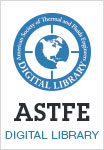
ISSN Online: 2379-1748
8th Thermal and Fluids Engineering Conference (TFEC)
Evaluation of Phase-change Material Performance in Hot and Dry Climate for Building Efficiency
Аннотация
In view of alarming rate of global warming, the increase in population in hot and dry climactic regions and the rapid growth of built environments in these areas, it is imperative to develop passive methods for increasing thermal comfort and thereby to reduce building energy consumption. As such, incorporation of phase-change materials (PCMs) embedded in the building structure has been studied widely as one of the viable methods, wherein the latent heat of melting of the PCM is able to absorb energy transferred to the building during hot days and release this energy during cooler nights, resulting in lower daytime air conditioning load in warm climates and lower night-time heating costs in colder climates. However, quantification of benefits of incorporation of PCMs in hot and dry climactic conditions has not been carried out to an extent where architects are able to readily access the material libraries and design guidelines. In this work, we examine the impact of the thermodynamic properties of PCMs and their suitability, particularly for hot and dry climatic conditions, for Gandhinagar in Gujarat, India as a typical case study. On a building roof that has embedded PCM blocks, we impose boundary conditions based on real-time environmental data recorded for this region. We investigate liquefaction frequency and charging-discharging dynamics of a few candidate PCMs and quantify the impact on the energy ingress into the indoor environment. This paper presents some selected results from this study, and explores the impact of parameters such as PCM volume, PCM's phase-change temperature and their location on its performance as an energy saving tool for built environments.
Ключевые слова:
PCM, Building efficiency, cooling load, phase change temperature, liquefaction frequency, PCM thickness